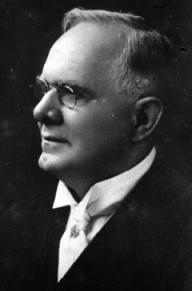Love Olde Florida
Florida as it used to be – and still is if you know where to look.
Friday, October 7, 2011
Wednesday, November 10, 2010
Gator tale: He's the longest ever caught
Friday, November 5, 2010
In 1916, another close governor's race
Florida State Archives | Florida Memory Project
Vintage silent film shows Sidney J. Catts' Inauguration Day. This is a short clip. You can see the full five-minute version at Florida Memory. Tuesday's election results beg comparison to one 94 years ago. In 1916, a political outsider who had never held public office before beat the establishment candidate by the narrowest of margins – just 9,203 votes. There is no indication that he spent his own fortune to do it, however.
 |
| Sidney J. Catts |
Catts, an Alabama native, studied law at Auburn and Howard Colleges in Alabama and received a law degree from Cumberland University in Tennessee. He practiced law for four years before becoming a Baptist minister. He came to Florida in 1912 when he got a call to a church in Defuniak Springs. Three years later, he resigned and started selling insurance, a career move that allowed him to meet a lot of people and develop the idea of running for governor.
In 1916, Catts entered the Democratic primary, irritating the establishment party bosses. Catts won by a very narrow margin, but party bosses got the Florida Supreme Court to order a recount, and Catts ultimately lost.
But Catts didn't give up easily. He switched parties and ran again as the Independent Prohibition Party candidate. It was a four-way race, with a Democrat, a Republican, a Socialist and Catts, who prevailed, winning 39,546 votes. He was the only governor in history to win solely as a Prohibition candidate. A congressman from California was the only other Prohibition politician to hold office.
Despite his anti-Catholicism and his racism (he once called blacks an "inferior race"), Catts' administration accomplished some progressive things for the time, including reforms in the treatment of convicts and the mentally ill. Labor and tax reforms and road improvements were started and Catts pushed for women's suffrage. He got a Prohibition Act passed but supported local option gambling.
Shortly after he took office, Catt returned to the Democratic Party. He could not succeed himself as governor so he ran for the U.S. Senate in 1920 but was defeated. He never held public office again but remained influential in Florida politics until his death in 1936. He was among the Democrats who worked against Al Smith's campaign in 1928. Why? Smith was Catholic. Herbert Hoover won that election.
Thursday, November 4, 2010
The last territorial governor
 |
| John Branch |
Branch was born in North Carolina in 1782, the son of wealthy landowners. He became a lawyer, planter and civic leader. Branch served in the North Carolina State Senate. He was elected governor of the state in 1817.
He was a strong supporter of Andrew Jackson, who named him Secretary of the Navy. He resigned in 1831 and became a state legislator in North Carolina.
In the mid-1830s, Branch moved to Florida and began the famed Live Oak Plantation, a 1,560-acre cotton plantation on the eastern shore of Lake Jackson, north of Tallahassee. Branch lived there 15 years.
President John Tyler appointed Branch as Florida’s territorial governor in 1844. He replaced Richard Keith Call, who ran for governor and lost. Call never held public office again.
William Dunn Moseley, another North Carolina native, won the election and became the state’s first governor.
In the early 1850s, Branch moved back to North Carolina and remained there until his death in 1863.
His portrait was painted by Clearable Jett in 1960. Jett, a native Texan, moved to Tallahassee in the 1940s. She painted historical scenes and historical portraits of early Florida governors.
Information from John Branch: 1782-1863 by Marshall Delancey Haywood, Wikipedia, and From Cotton to Quail: An Agricultural Chronicle of Leon County, Florida, 1860-1967 by Clifton Paisley, was used in this report.
Subscribe to:
Posts (Atom)
